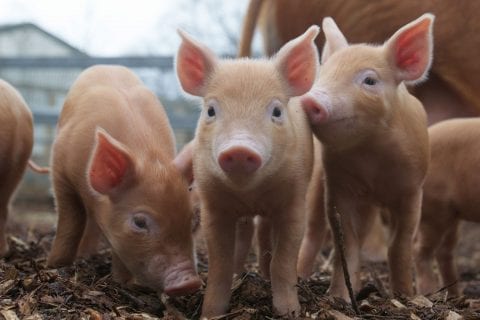Your Visit
Zoo HabitatsZoo Habitats
Dublin Zoo is home to over 400 rare, exotic and endangered animals from around the world. With vast grounds to explore and lots of outdoor and indoor habitats housing your favourite animals, Dublin Zoo is unique place to see wildlife in the heart of Dublin city.
Zoo Habitats
Dublin Zoo is home to over 400 rare, exotic and endangered animals from around the world. With vast grounds to explore and lots of outdoor and indoor habitats housing your favourite animals, Dublin Zoo is unique place to see wildlife in the heart of Dublin city.
Habitat Design
Dublin Zoo carefully designs habitats for the animals that are inspired by the wild and that create an exciting experience for visitors. Species that would often exist side by side in the wild share habitats in Dublin Zoo and the animals have continuous access to their outdoor and indoor habitats which have private spaces where the animals can take shade, keep warm (and hide from visitors!) if they so please.
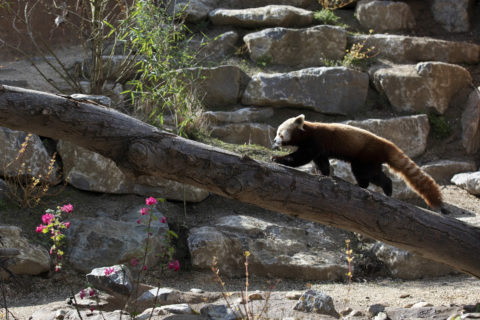
The Himalayan Hills
Venture to the highest point of the Asian Forests at Dublin Zoo to find the snow leopard and red pandas.
The habitat is inspired by their natural environment in the wild – the Himalayan mountain range. It reflects the look and feel of a Nepalese Village with red and blue roofs and multicoloured prayer flags.
Gaze up at the 15m mountainous slope through an impressive panoramic viewing area to try to spot a well-camouflaged snow leopard. Travel along the rocky trail to see the red pandas – exploring, climbing, munching on bamboo or curled up in their signature pose at the top of a tree.
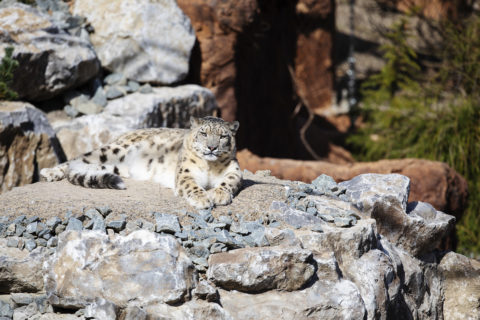
Wolves in the Woods
Wolves in the Woods, was inspired by the natural environment of the grey wolf- woodlands.
Watch the pack of wolves from three visitor points around the habitat which includes a trees, a stone water feature and a den.
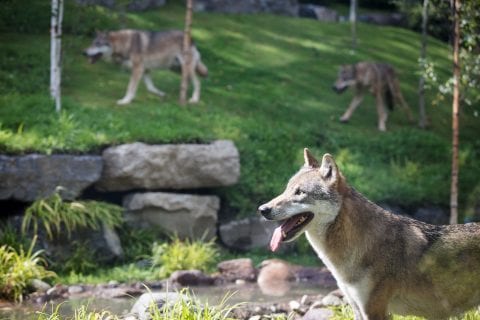
The African Savanna
The African Savanna is Dublin Zoo’s largest habitat and is home to giraffes, southern white rhinos, ostrich and zebras. Also on this vast expanse, you will find a very special species – the scimitar-horned oryx, a species of antelope that was once extinct in the wild. Now thanks to zoo breeding programmes, the species has been re-established in the wild in Tunisia.
Make sure to check if there is a giraffe or rhino keeper talk taking place on the African Savanna when you visit or see what’s happening now on our webcams.
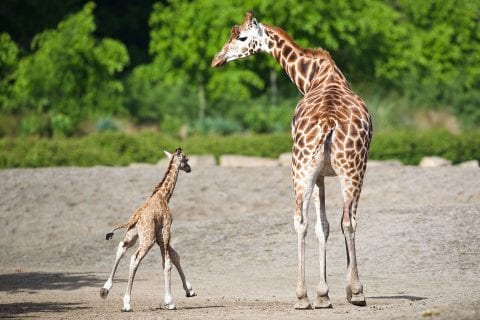
Kaziranga Forest Trail
Step into the dense bamboo rainforest and follow the trail to spot Dublin Zoo’s monumental elephant herd.
Watch the elephants bathe in pools, munch on branches and roll around in mud baths built especially with their needs in mind.
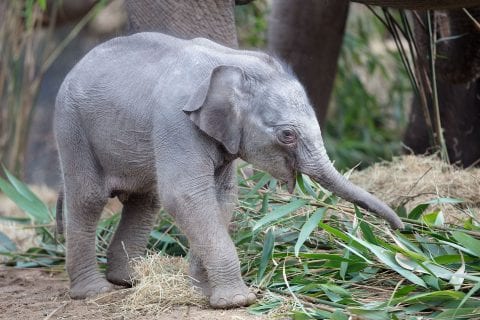
The South American House
The South American House is home to over nine species including monkeys, sloths and birds from the rainforests of Central and South America. Colourful or camouflaged, shy or show-off, each species has its own place in the forests. As some of these species share habitats in the wild, such as the two-toed sloth and the Goeldi’s monkey, they live side by side at Dublin Zoo.
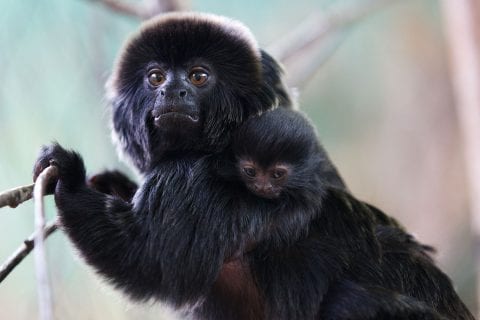
Zoorassic World
Zoorassic World is Dublin Zoo’s home to reptiles- past and present.
Here you can meet Stan, the life-size Tyrannosaurus rex skeleton, a dinosaur species that lived 65 million years ago. And while you’re visiting, you can also see 12 living species including west African crocodiles, a king rat snake, a green tree python and more. Many of the living reptiles found here are part of international breeding programmes for endangered species.
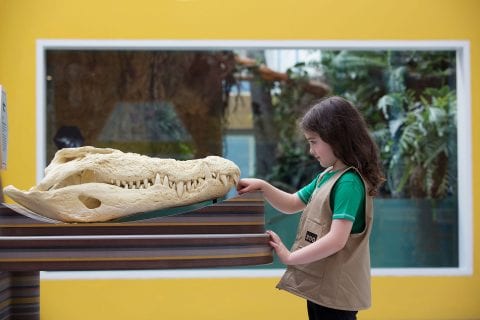
The Nocturnal House
The Nocturnal House at Dublin Zoo is home to aye-ayes, a nocturnal species of lemur that can only be found in the wild in Madagascar.
Located just beside Himalayan Hills and Sea Lion Cove, the Nocturnal House has been built specifically to meet the needs and unique ecology of the aye-aye. The habitat mimics night-time conditions, allowing visitors to observe and learn about the aye-aye’s active nature.
Open daily from 10.30am.
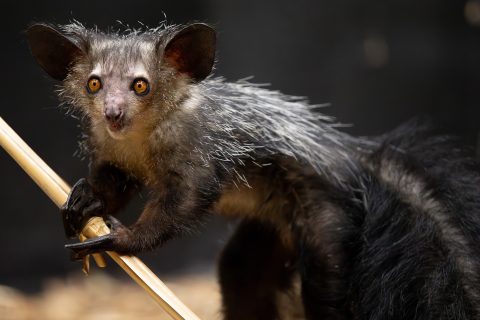
Gorilla Rainforest
The Gorilla Rainforest is home to a troop of the largest living primates- the western lowland gorillas.
This habitat is designed with their behaviour in the wild in mind and as gorillas are tranquil by nature, this habitat has dense foliage in which they can take a private moment to themselves. But if you’re lucky, you might see the gorillas as they perch on high, rocky ridges and climb trees, surveying their surroundings.
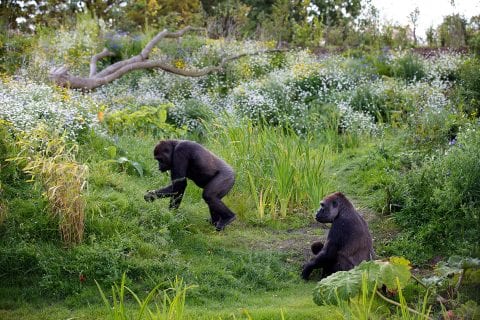
The Orangutan Forest
Orangutan Forest was inspired by the natural habitat of the Bornean orangutans, the tropical rainforests of Borneo. Orangutans are arboreal animals that spend the majority of the time in the trees of their rainforest home.
The most spectacular feature of the new habitat is eleven trees, between 7 and 12 meters high that will encourage the orangutans’ natural climbing behaviour.
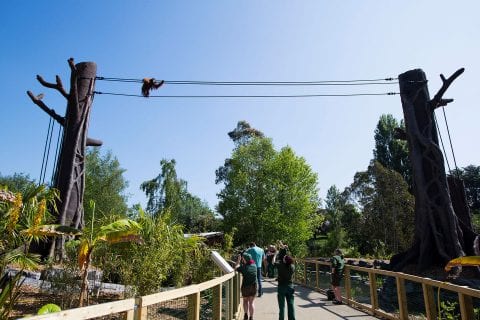
Sea Lion Cove
Opened in 2015, Sea Lion Cove is one of Dublin Zoo’s newest habitats and is home to the colony of California sea lions at Dublin Zoo. Watch these underwater acrobats from the underwater viewing area and don’t forget to catch the sea lion presentation at 2:15pm daily during the summer and at weekends during the winter.
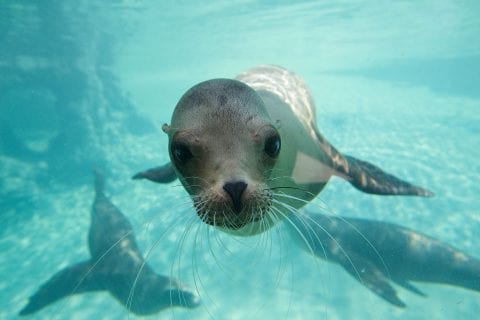
The Family Farm
There is always something happening on Ireland’s smallest, most exciting farm!
Visitors can meet the resident farm animals – cows, sheep, pigs, goats, ducks, rabbits and chickens. There’s even a special life-sized dairy cow model you can try to milk yourself!
